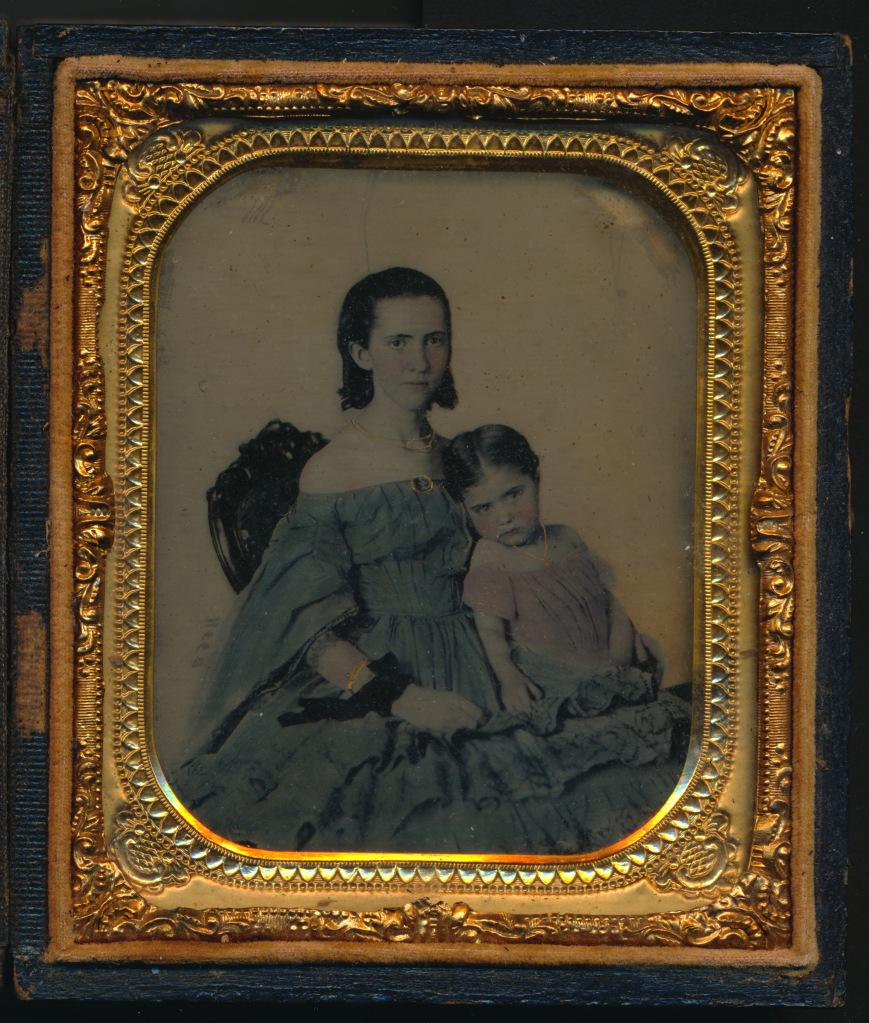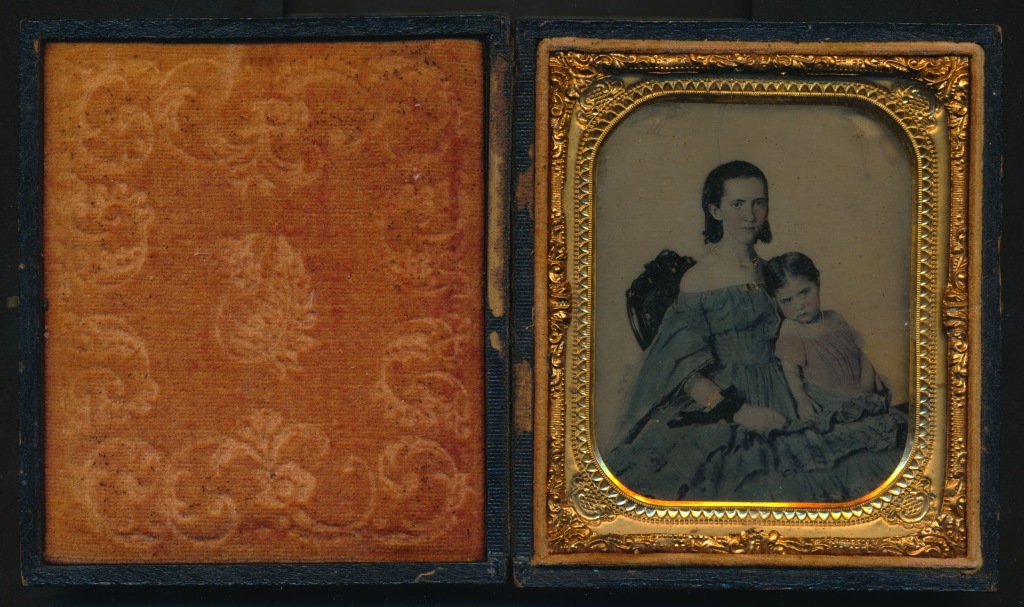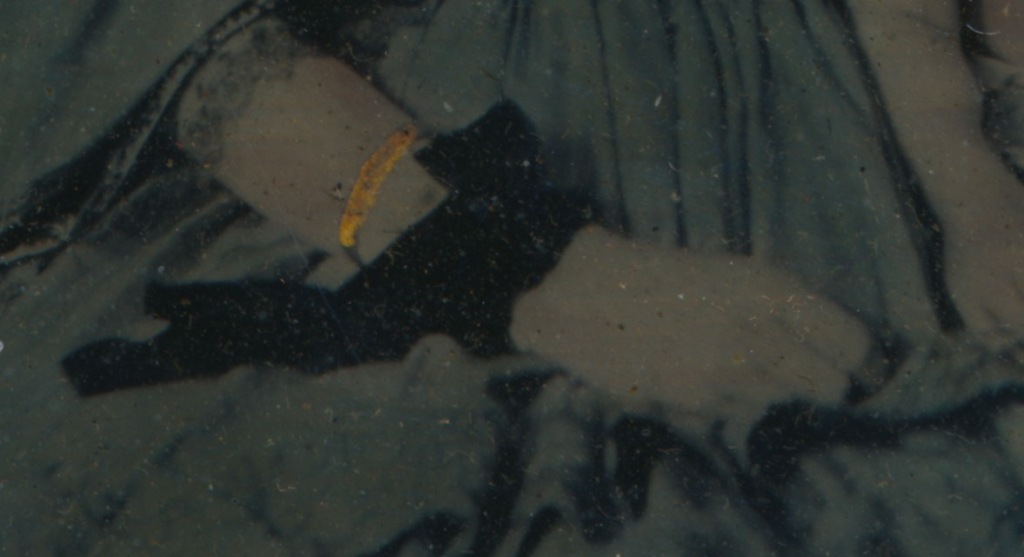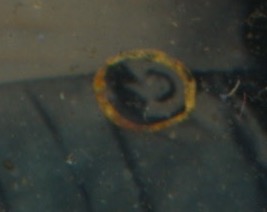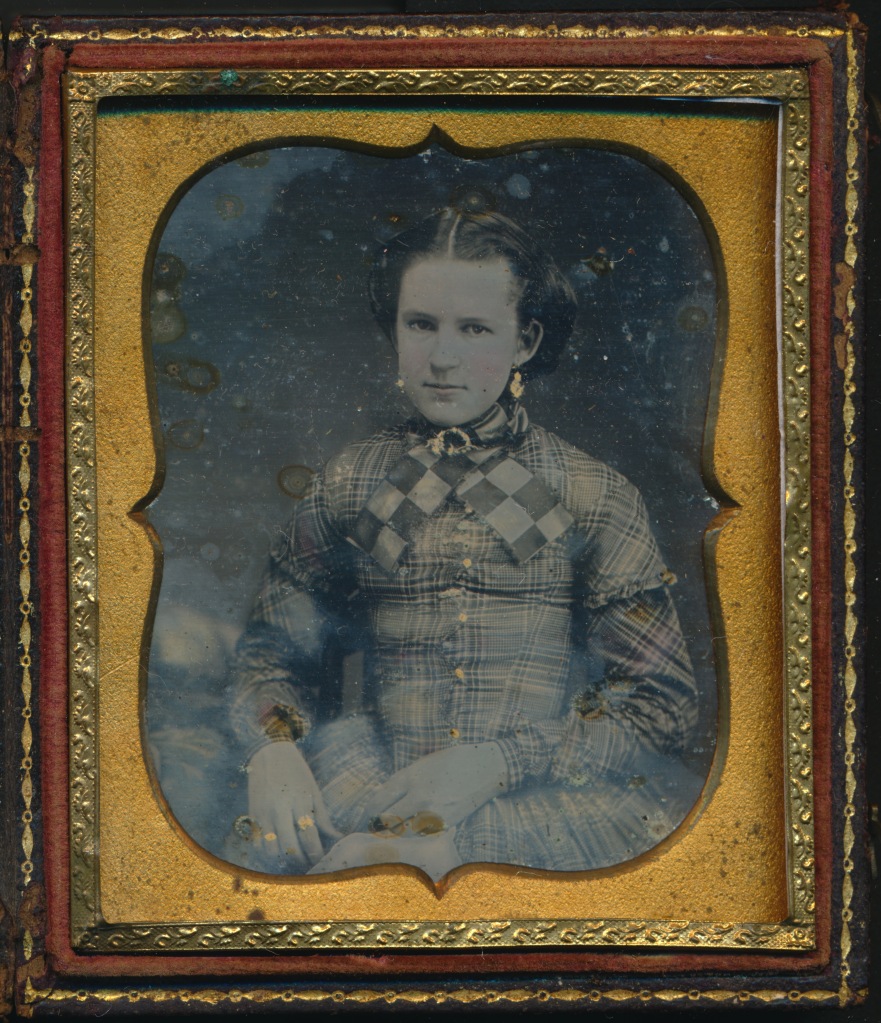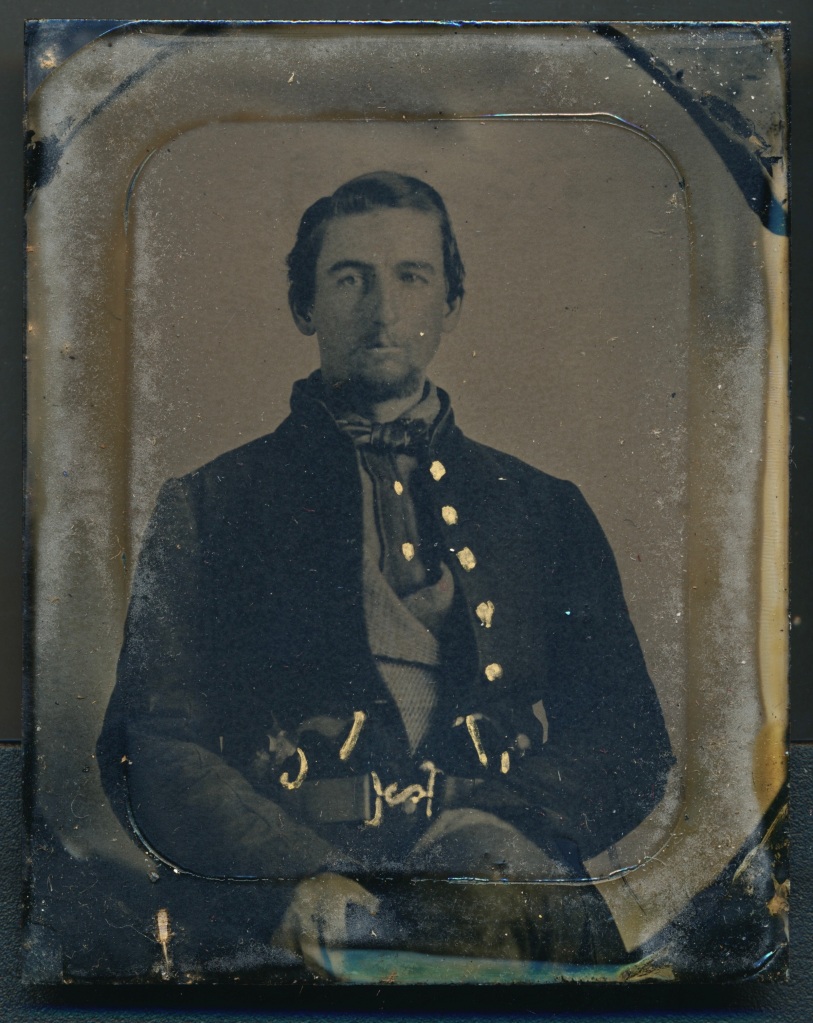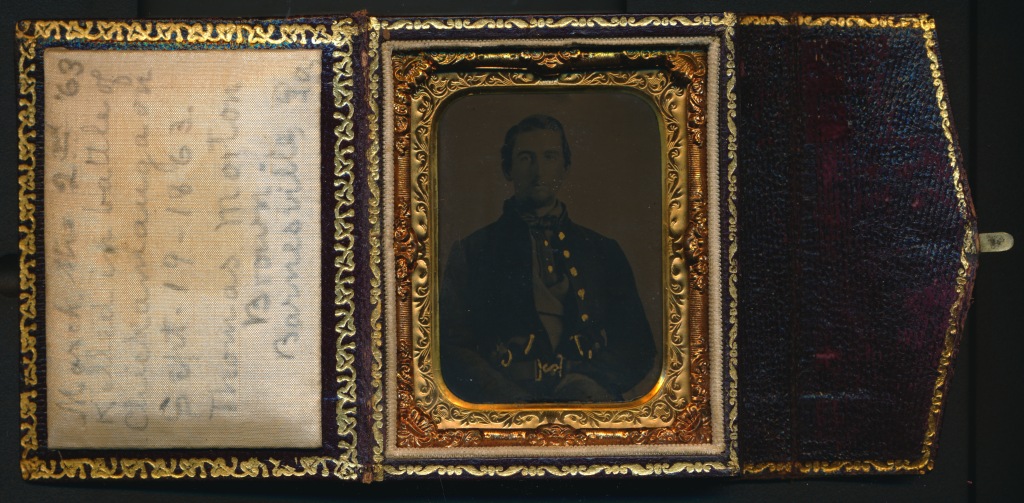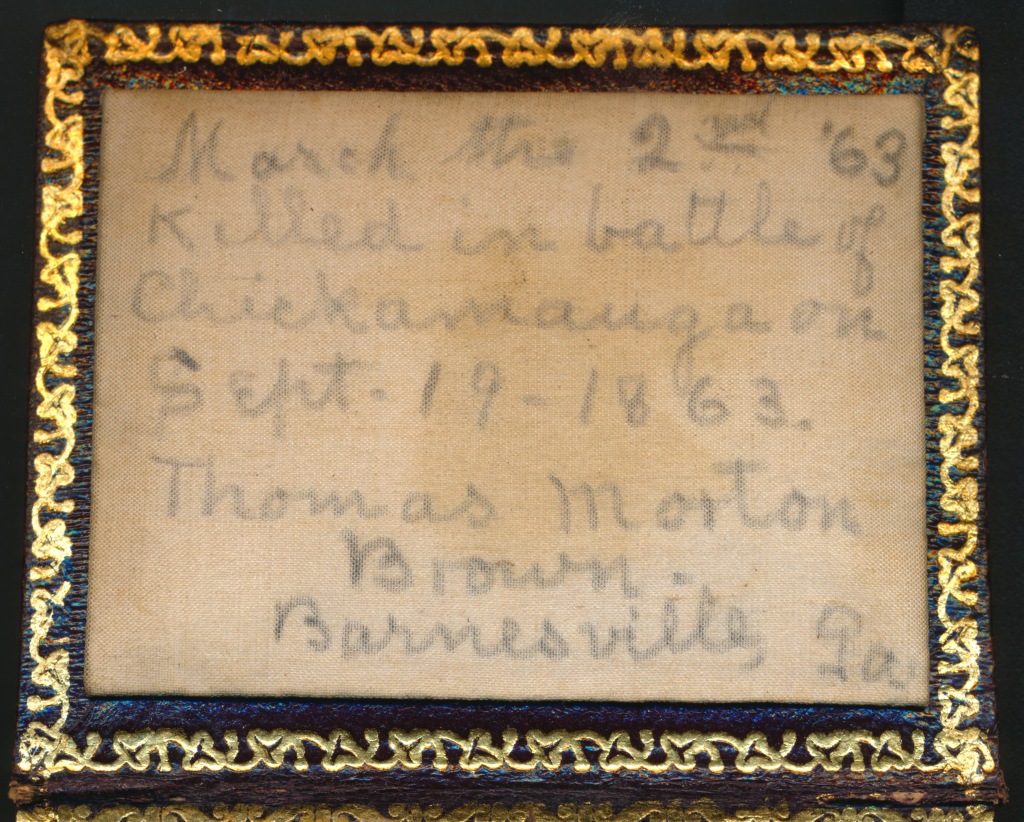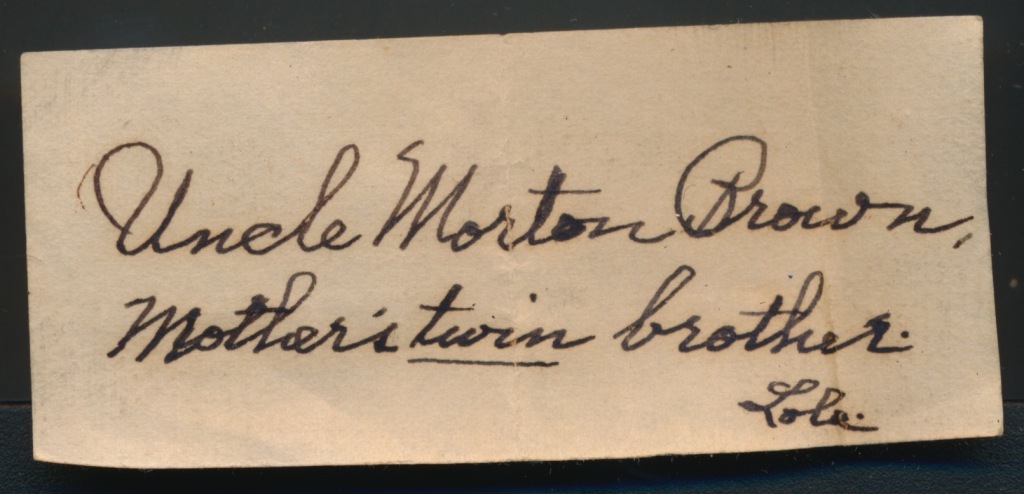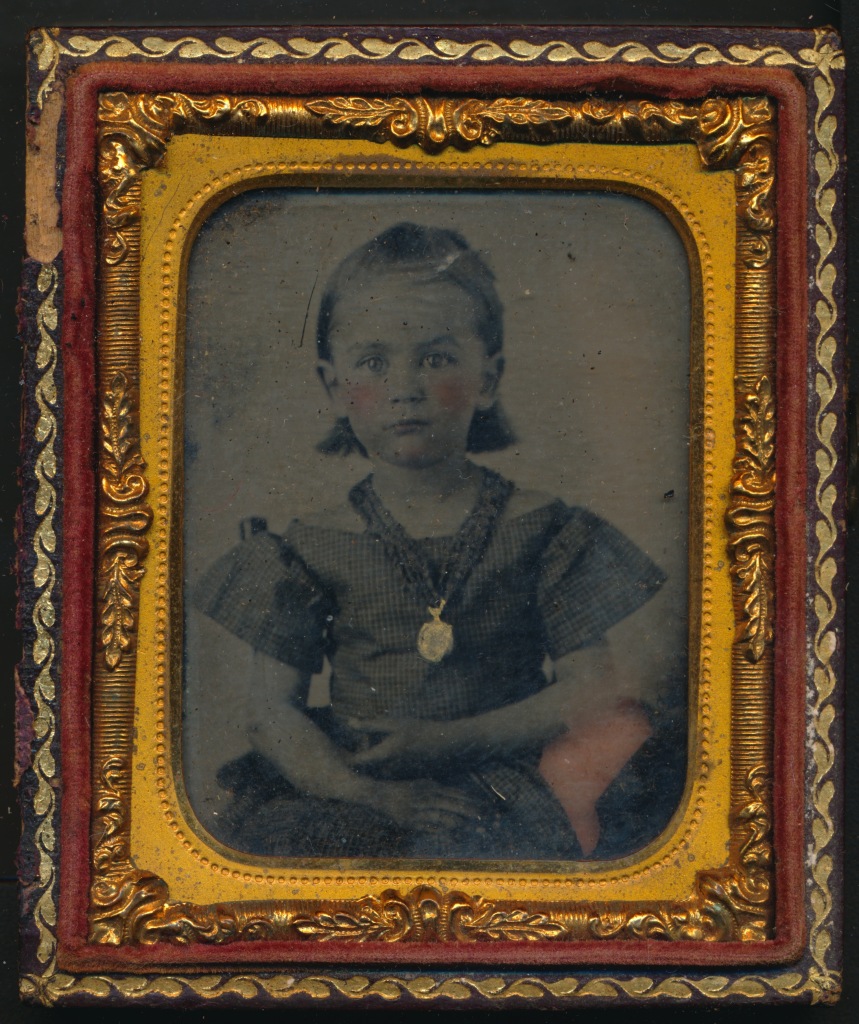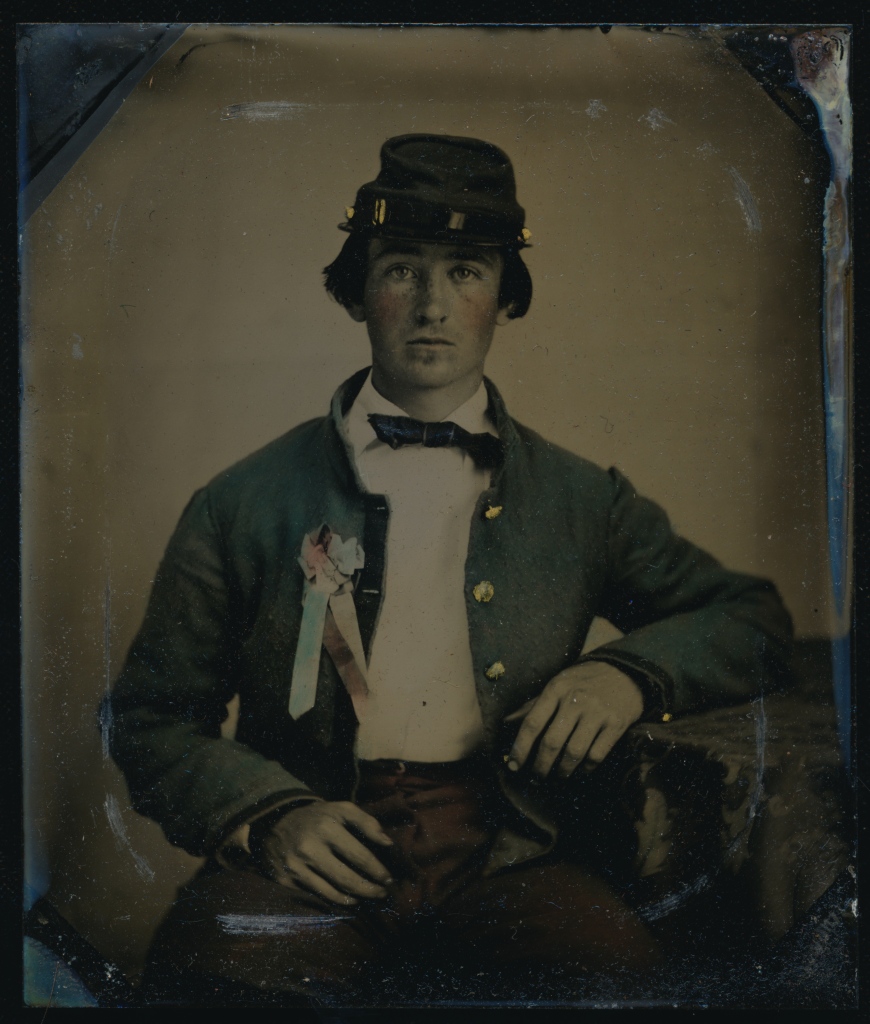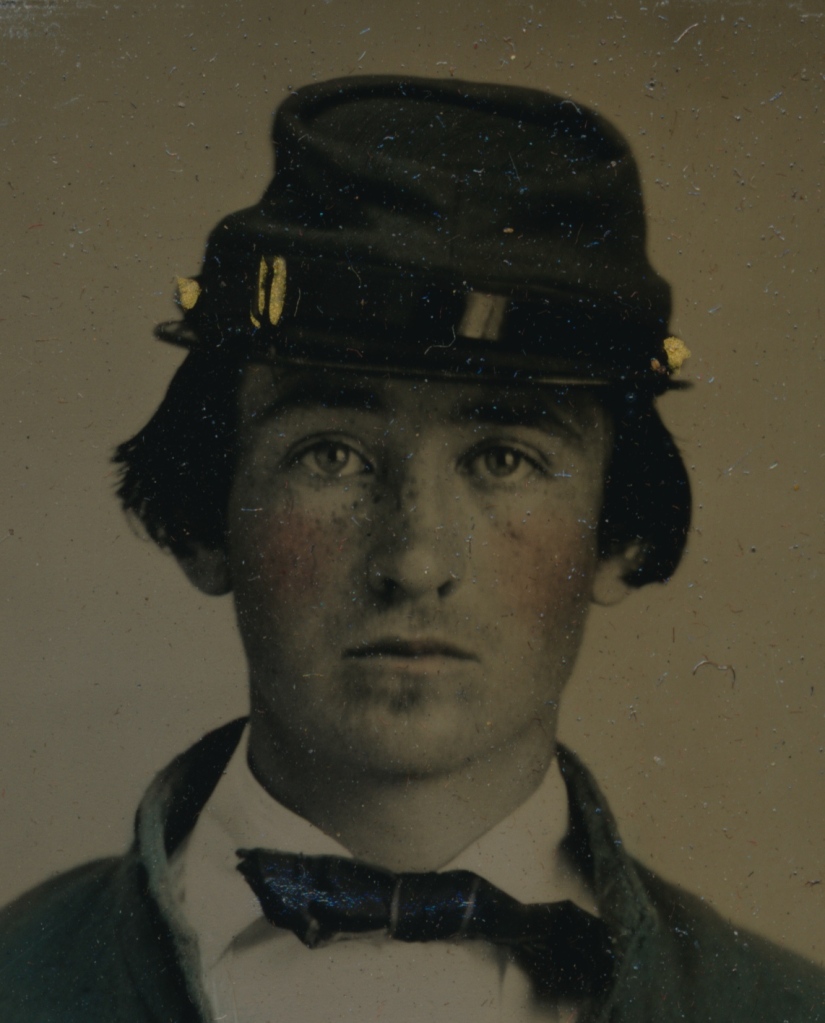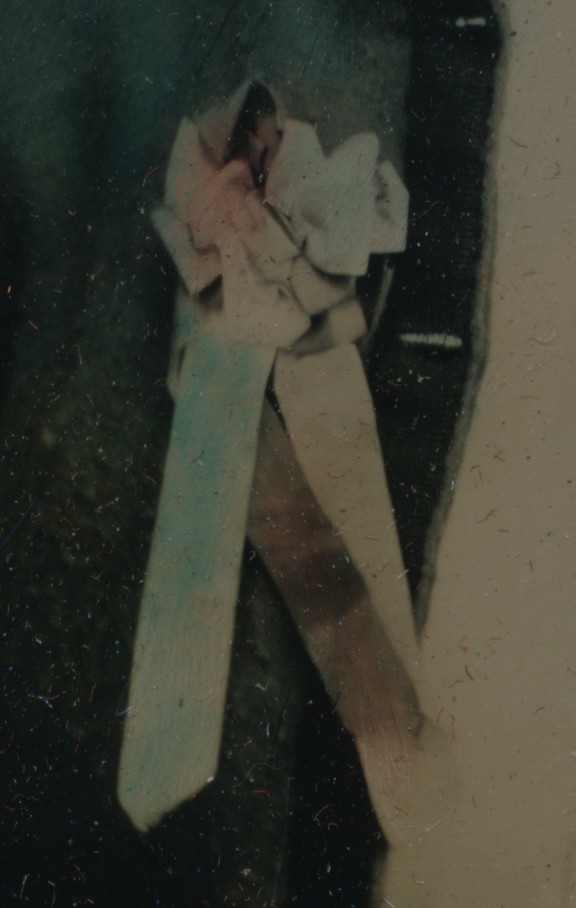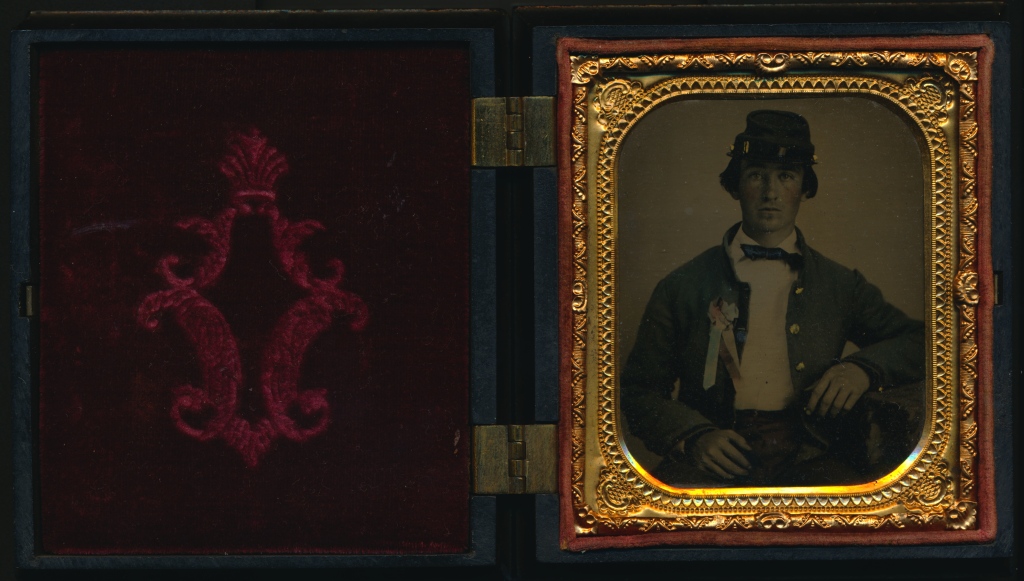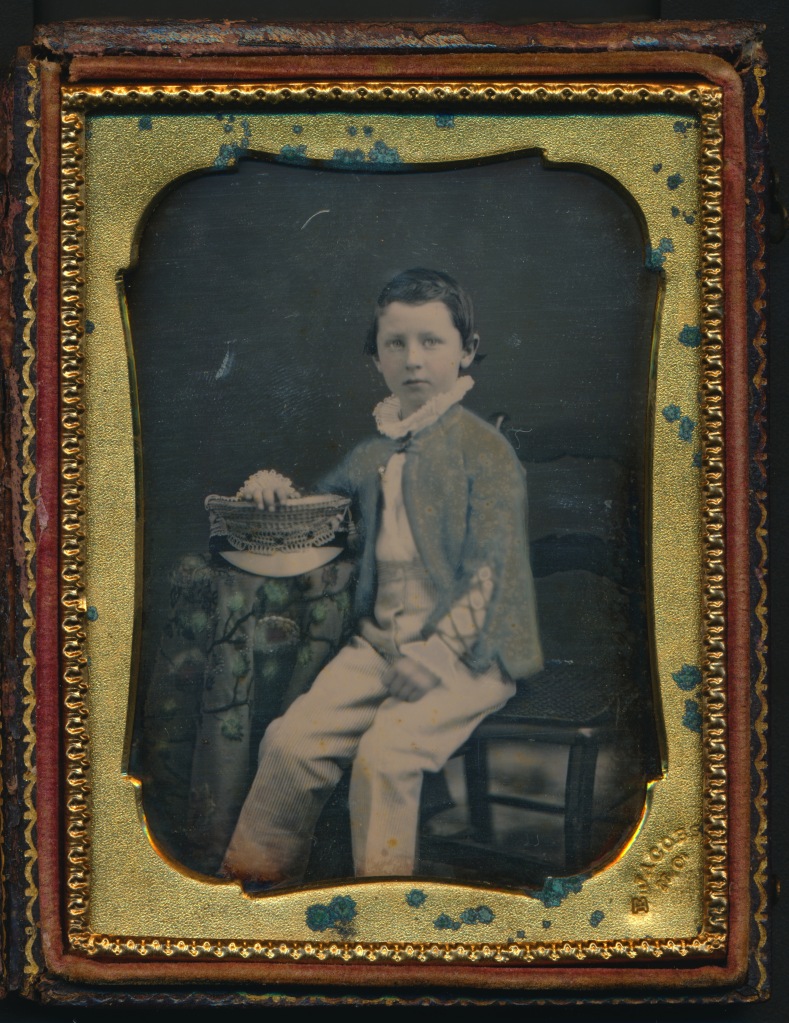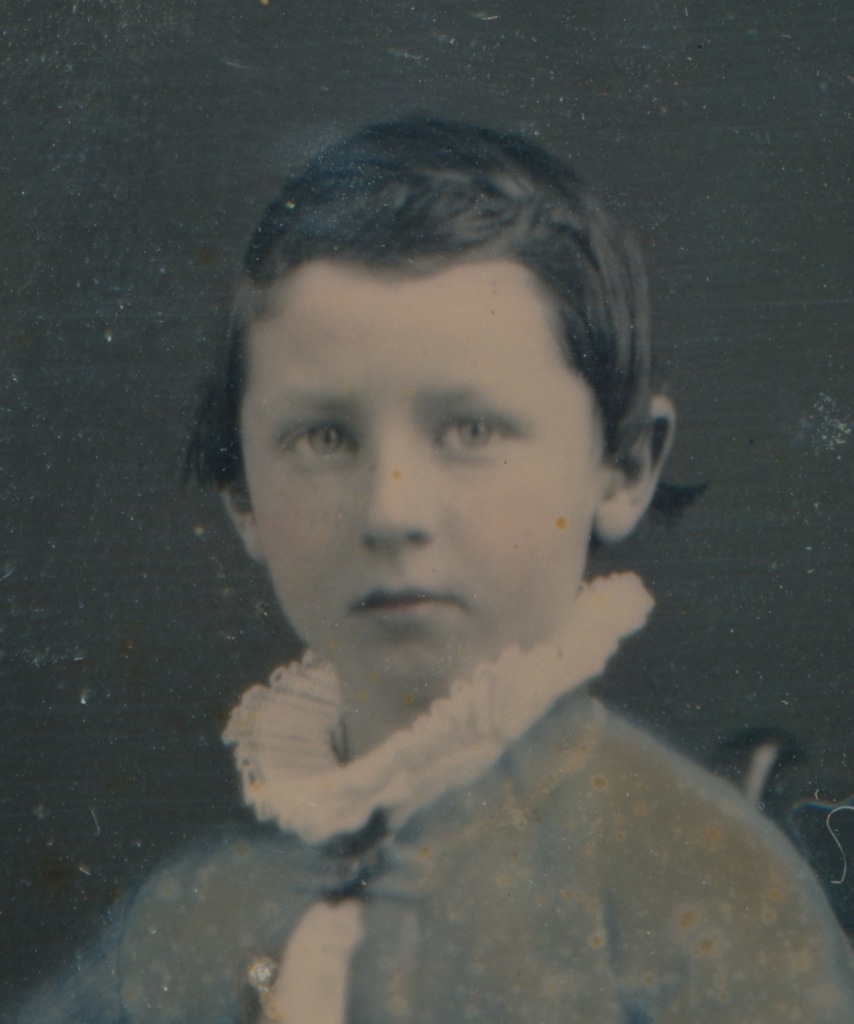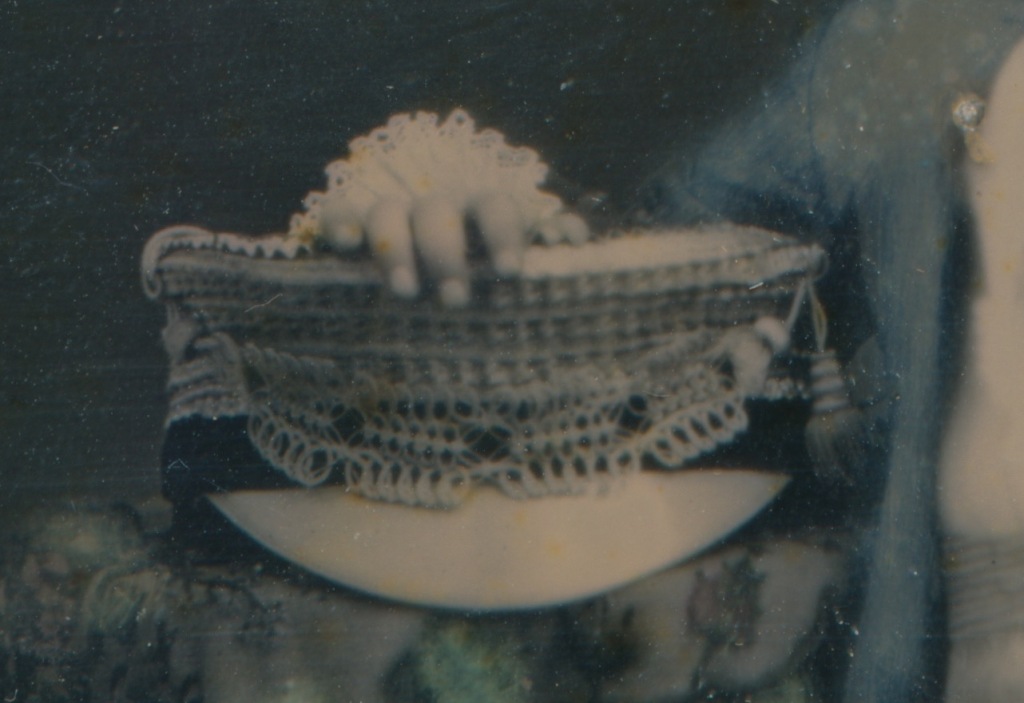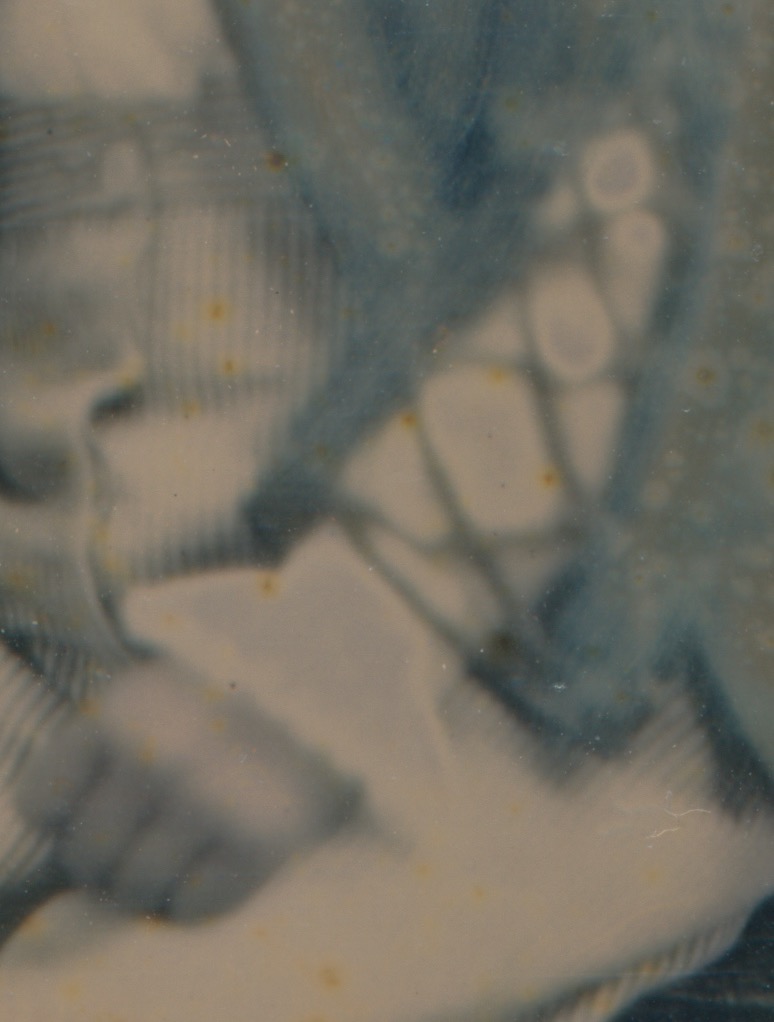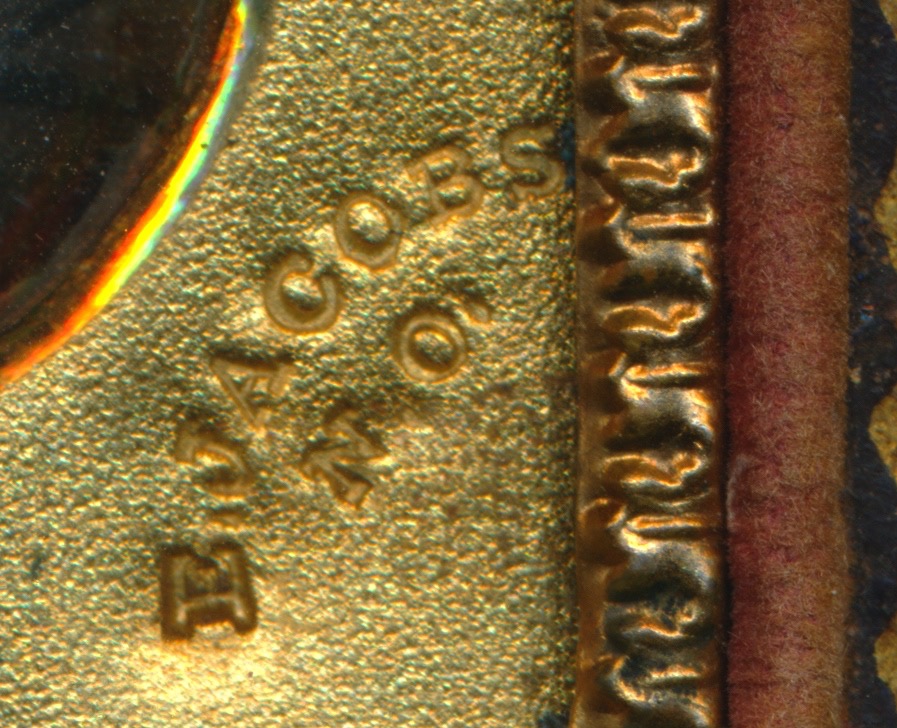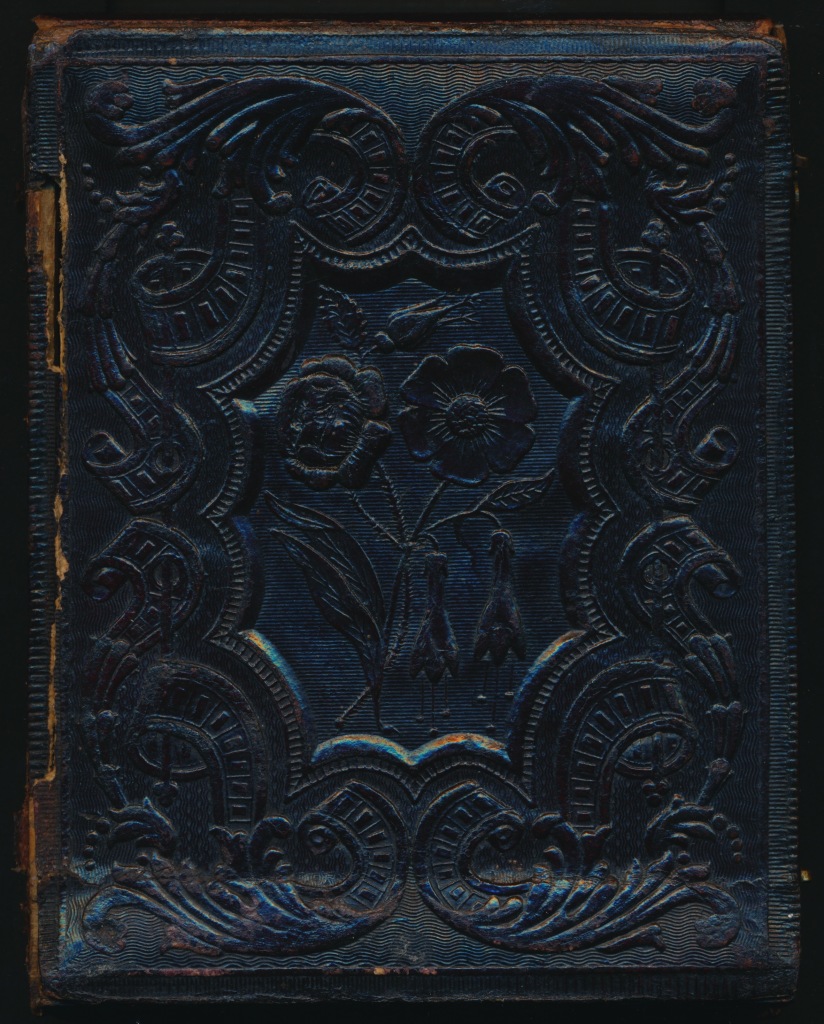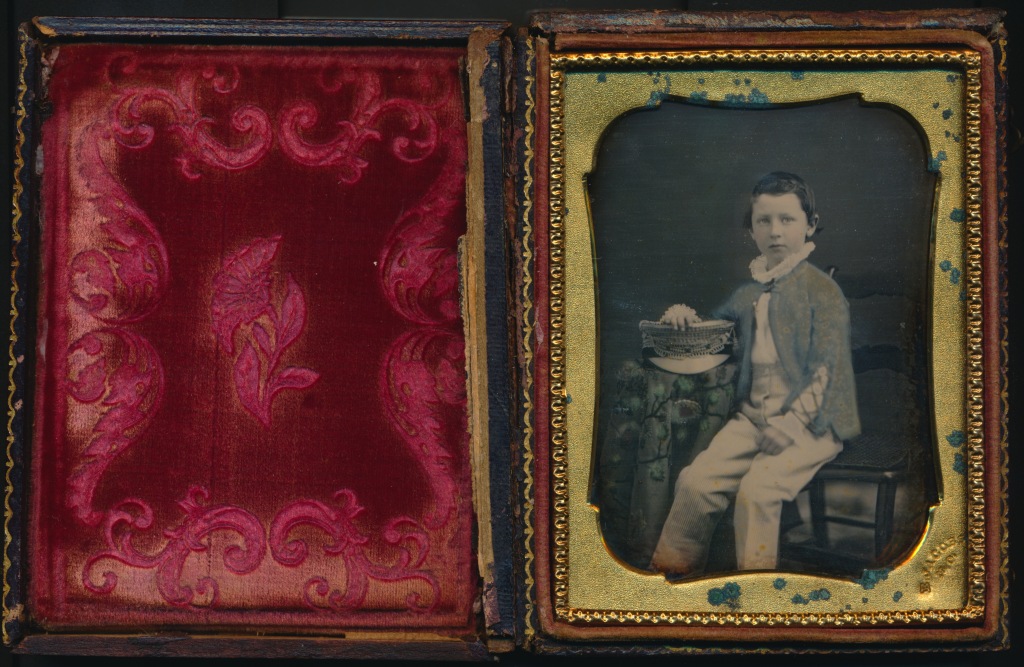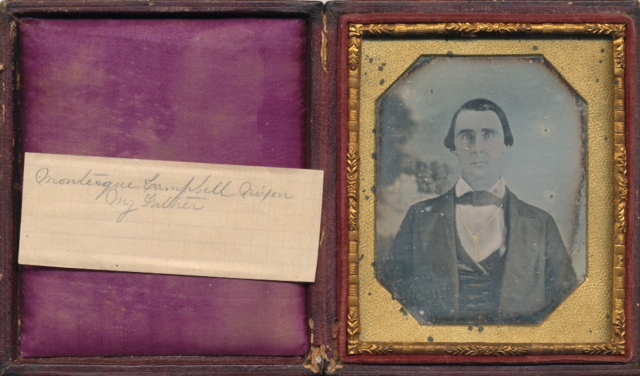This letter was penned on April 18, 1862 from Sergeant Franklin Augustus O’Neil of Company H (later D), 2nd Regiment Confederate Infantry (Bowen’s Brigade) to his wife about his experiences in the Battle of Shiloh. The letter is a highly personal vivid account of the battle. O’Neil would be elected 1st Lieutenant of Company D, 1st Mississippi Battalion Sharpshooters upon realignment in May 1862. He was from Carroll County, Mississippi and apparently left his unit in 1863 and moved with his wife to Texas.
The letter reads:
Corinth, Miss.
Apr. 18, 1862
My dear Wife:
This morning I sent you a letter and now will write you another and will try to give you some of the incidents of the battle of Shiloh, fought on the 6thand 7thof this month. On Monday night before 10 o’clock we got orders to cook 2 days rations and be ready to march by 10 o’clock the same night. By that time we were called into line and marched into Iuka, a distance of 9 or 10 miles from Burnesville (the latter being the place where we were stationed) reaching there about an hour by sun Tuesday morning. We there found a large number of our forces drawn up in line of battle and altogether everything looked more like a fight that anything I have ever seen before. We took an advanced position stacked arms, ate breakfast and layed down to rest which was very much needed after marching the night before over the most awful road, often half leg deep in mud and water, wetting our feet thoroughly. On the march we were halted to rest a little just before day. I laid my head on a pine limb and had a refreshing little sleep.
All day Tuesday we lay in the woods near Iuka and also Tuesday night. Wednesday morning about sun up a brisk fire began in front of us, which we believed to be the enemy driving in our Pickets but soon found out better. I must own I felt serious when I expected soon to be engaged in a bloody strife and was glad when I found out better. We were called into line and marched back to our camp at Burnesville, getting there about 1 o’clock. Immediately on our arrival we had orders to cook five days rations and be ready to march at a moments warning. Notwithstanding the fatigue of the march the men went willingly to work after a few minutes rest and by 12 o’clock that night all were ready and we laid down to rest.
Just before day Thursday, the long roll beat, all were soon up and armed ready for march. Just about that time the clouds opened and a powerful rain soaked us to the skin. I was more fortunate than the rest for as soon as the rain began I ran to a little house near by and kept dry. About sun up the rain stopped and we were put in line ready for the march. The 15thregiment passed us at that time and I recognized many of my friends but had not time to converse with any of them. We were soon put in motion and marched all day over terrible roads, and for several hours in the morning it rained a slow rain, enough to wet up and make our blankets heavy to carry. Many of the men threw away their blankets. That day we marched 22 miles and lay down in an old field without tents and again that night we had a big rain and wind which made us wet.
Friday morning early we started and made that day only about 8 miles and camped again in an open place without tents, and it was said in 2 or 3 miles of the enemy. That night which was Saturday, we had no rain, but my sleep was not sweet. I had frightful dreams. Sunday morning just as day peeped along the eastern horizon a few Vollies of musketry was heard to our north and soon after it was a continued and general roar of small arms accompanied by the heavy booming of cannon which made the very earth shake.
My thoughts were of you, and I knew well that day would send sorrow to many a happy home. We were soon started toward the battlefield but we did not get to fire a gun until 1 o’clock Sunday. About a mile and a half from the battleground we were marched out into an old field, there formed in line of battle, our knapsacks and blankets put in piles and we moved double quick most of the time. It was not long before we met the wounded going back, some slightly wounded and others severely, in wagons. They all told us the enemy was giving back. Some poor fellows looked gastly from loss of blood but they waved their hats and encouraged us on.
Next thing we came in sight of was the Yankee camps and then we began to see the marks of the balls on the sides of the trees mostly very high up. When in a hundred yards or so of the camp we saw a few dead of both sides, mostly shot thru the head. One poor fellow of our side was lying near the road shot thru the head; He was laying on his back with both legs doubled back under him. The firing was still a good ways from us, the enemy giving back. We then turned to the right and were marched about half a mile and halted. That was about 12 o’clock. About 200 yards in from of us there was a party of men (I don’t known what brigade) drawn up in a battle. Not long after that they opened fire and I knew then that our part would soon be opened. The order “Load” rang along our lines: I found that with my flask, ball and patch I could load faster than the rest. We were then marched back a short distance and the lamented Johnston rode up to us, made a short speech which I could not hear, and we moved rapidly toward a little field where there was a heavy fire going on. I could not see our men engaged. We passed thru a deep hollow full of thick bushes and in that place one of our company was shot thru the leg and left on the field. I had no idea we were in range of any guns but some of the boys said they heard balls whistling.
I went running thru the briars and bushes to listen for balls. I knew it was my duty to go, if it was to poke my head in the mouth of a cannon. On getting into the opening I saw that the Yanks had given way, but there lay our men dying and dead. We then stopped and it looked to me like no one knew what to do. We were marched a little in one direction and then in another, not long though before we were cut off in double quick, passed thru another little field and a Yankee camp, and just as we reached the far side our men all fired into a thicket, but so save my life, with all the eyes I had I could see nothing in the shape of a Yankee and consequently did not fire. The ball I had in was put there to kill a Yank. We went then about 75 or 100 yards further and sat down on the brink of a very steep hill while heavy firing was going on to our right. Balls were flying over and around us all the time. I kept a sharp lookout for a Yank, for as yet I had not seen a well one and must so, I wanted to see one. I was not long waiting for I soon saw one of the blue coat boys standing behind a tree shooting at us something like 200 yards off. I asked permission to rout him which was gived. I then advanced a few steps in front of our lines to a log and when the scoundrel would put part of his body round the tree to fire on us (and he was careful not to expose much of his body) I would send a leaden messenger over there which soon made the place too hot for him, for the third broadside from my old deer gun made him leave at a little more than double quick. Soon after that we advanced to the next hill and came suddenly on a large body of skirmishes, then had some fair shots at about 400 yards, but could not tell with what effect. Several of the enemy were killed and the rest soon fled. At that place one of our men, Joe Holder, was shot thru the side of the face. We then advanced rapidly to the next Ridge, passing, it seemed, over ground when some time that had been fought a desperate battle, for one or two little hollows were full of dead Yankees. It was there that I saw more of their dead than any other place. On rising that ridge the next beyond burst out in a blaze of fire and our regiment was soon cut to pieces. I first stood out in open view and fired; but I looked around and saw everybody else behind trees, logs and stumps, so I stepped behind a tree myself but they crowded me so I could not use my gun as I wanted to. On looking somewhat in advance of the regiment I saw a large stump which I ran to and fired near 20 times and not a time without seeing a live Yank to sight at.
All this time many were falling around but that was not my business. I was to kill men and was doing my best. Our flag was soon shot to pieces and has since been sent to Grenada. Two cannon balls went thru it, one through the upper and lower bar. They did not make round holes as one might think they were torn by bushes, but they are certainly the mark of cannon balls. You must go and see it. At last we had the order to advance, and we uncovered and advanced a few steps further and after firing a few rounds Tom Harper was shot and fell down before me. Capt. Rayburn was near and ordered me to take him to the rear which I did, also three other boys that had been shot and in taking them the balls fell like hail and I felt more in danger than at any other time. We were fully exposed and I knew well that they would shoot at us. As soon as I took them to a place of safety and gave them water I returned. I don’t think the firing lasted more than 15 minutes after I left.
While we were falling so fast before the tremendous fire of the enemy the 15thregiment came up on our left and opened fire but I did not notice till afterward for when they came all was smoke and every man for himself. It was at this place and from what Rayburn says, in 20 steps of there I was fighting that your brother Frank fell. It seemed strange that some of us did not know some of that regiment while we were fighting but we did not. Our eyes were fixed on the enemy. When I came back after giving our boys water and directing them to the hospital I could not find my regiment and hurried across the ridge covered with dead and wounded and must have passed within a few steps of Frank, I hurried on in the direction of the firing and pitched in with another regiment, but the firing was soon over and the fighting was done for the day except the shelling of us from the gun boats. When I could no longer find a Yankee to shoot at I went on toward the river under command of no one but myself, and I began to think I was a pretty good regiment. I went up on the left of some regiment that was drawn up in line near the river in a little field and while there a shell fell about the center of them, and the way that regiment got away and your humble servant too, was a sight. I guess I made old legs run some that time.
In going back a little ways I met my regiment coming up and I pitched in with them and went sill nearer the river than before, but it was of no use. The balls and bombs were thrown so thick and fast that no troops could stand before them. We laid down and covered best we could and retreated by going between hills and such places as would shut us out of the shells. You never saw such dodging in all your life. I noticed some could not help it. I dodged some times when they whistled unusually near my head, but not often for I looked to see them but never saw but one and that was in the first hard fight we had. I saw a ball pass close to my head. It was while I was lying behind my stump shooting so fast. They must have seen my position and shot it with their rifle cannon which it seemed they could use with as much accuracy as we could our small arms. Several musket balls struck the stump while I lay behind it.
When we got out of range of the gun boats the sun was down and we turned into some Yankee camps and lay down for the night. There was everything in the camp you could call for. Jack and I made some coffee, had cheese, crackers, butter and everything. We got a lot of Yankee letters and read and laughed over them, then made us a bed of Yankee blankets and overcoats and lay down to sleep and we slept too, though they fired their bombs out from the river all night none of them fell in our camp, but I learned they fell in others and killed some more through the night. We then had a complete victory and If Buel had not arrived with reinforcements they would never have shown fight again at that place. But that night he came and many a poor fellow that had escaped the first day unhurt was doomed to fall the next. By light Monday we were up and hardly got into line before that heavy musketry broke on our ears which told that the destruction of human life had commenced again. We moved a little to the left and soon the enemies balls were whistling thru our ranks. I noticed our men were not in a condition to fight. They had lost their energy; they seemed not to care which way the battle went. We soon retired behind a hill and stopped with but little loss on our side. The Yanks came up on top of the hill and we raised a whoop and started toward them. They would not stand – they ran, leaving their overcoats behind. I with several others, got upon the hill in time to get a good fair shot at three of the fellows running through an opening. As the smoke cleared away I saw them double and take one of the others, holding him under the arms, I don’t know whether I shot him because there were other guns firing at the same time.
It was now our turn to run, so we ran under the hill and waited until we thought they were close enough, raised a whoop and went back but this time the enemy could not be seen, but still the balls fell thick and fast, killing several out of the regiment, and one out of our company who was shot thru the head and fell dead at my feet. I never fired atall because I could see nothing to shoot We soon retreated from that part of the battle ground and must have gone a mile when we were called into action again and had such a fight as the first. They would run a while, then we would run some. In the last fight we never lost a man, killed nor wounded. I thought the roar of battle was greater than at any other time. After fighting til 2 or 3 o’clock Monday it seemed to me the firing ceased by the consent of both parties and we quietly and in good order left the bloody place. But how many slept the long sleep of death on the battlefield, that a few hours before were well and in the prime of life.
I have told you before what I brought away. I could have got anything almost that belongs to an army, but the first place I wanted the enemy off of our land and did not take time to pick up plunder and in the next place I had a great horror of being killed with Yankee booty about me. If I had known when we were coming away I would have got an Enfield rifle. Jack and I picked a tea kettle from the field over the worst road I ever saw. On the battle field there are many things to excite: horses shot dead and many standing about with their legs broken. Dead men could be seen everywhere lying in all positions. Some had been laid straight and blankets spread over them and other were laid with their hats over their faces. I suppose their friends did it for them when they had time knowing it was the last act of kindness. Nearly all were lying as they fell when they were shot. Some had their features but little changed while others were so much changed that I thought it impossible for their friends to recognize them by their features. Many of their faces were much swollen and almost black; I saw one poor fellow lying on his right side with his head on a small limb which he had tightly grasped with both hands. Poor Harris who was shot thru the head by me Monday fell backwards with his head turned under his back. I straightened it out and when I left he was turning very black in the face. Marks of cannon balls were to be seen everywhere and I saw one tree shot through and through which was a least 18 inches thick.
One thing that disgusted me as much, I might say more than anything else was – an officer of our army going over the field looking in the pockets of the dead. I saw him go up to a Yankee that was lying by a tree, too badly wounded to move, and ask him if he had any money. I have no doubt hundreds of our men further back were engaged in the same business.
You have seen in the papers that our men sought plunder more than victory, and it is all so with at least one third of our men. I acted my part coolly and calmly did all I could to kill enemies of our liberties and shall act so in the future. You seem to fear that our next battle will be bloodier than the first, but I don’t think I will ever get in so heavy a fire again. All day Monday we fought and lost but few men and such is the case generally in battle.
Sunday our little regiment was exposed to the concentrated fire of the entire brigade of General Prentice. We did not capture them but we fought them and crippled them until they were flanked by another part of the army. As we were going to the fight Sunday morning I had sight of Gen. Beauregard; as I expected he is flesh, blood and looks like other men. He is low of stature, and his hair is nearly white though not from age. Gen. Johnston was a large heavy set man and I liked his appearance very much. I have no doubt but that he was an able Gen, and our country has lost one of its best men. I understand that he exposed himself more than he ought to have done. But he knew to lose that battle was his ruin, for many had already blamed him for the reverses we had before. And now another defeat would have ruined him. I have told you, I think, of the rain we had on us returning to Corinth for two days and nights. I was wet to the skin but I bore it well. I have not been sick since. A great many of the men are sick and getting sick. I have no doubt from exposure Sunday, Monday and the two days coming to Corinth.
Yesterday I head Congress passed an act to keep the men now in service 2 years more. If it is so it is for the best. If all the twelve months men were disbanded this spring we would have no army and the Yankees would make an easy conquest. To give up now is our destruction.
Your devoted husband,
F.A. O’Neil
Co D, Miss. Battalion, Bowen Brigade
Battle of Shiloh
